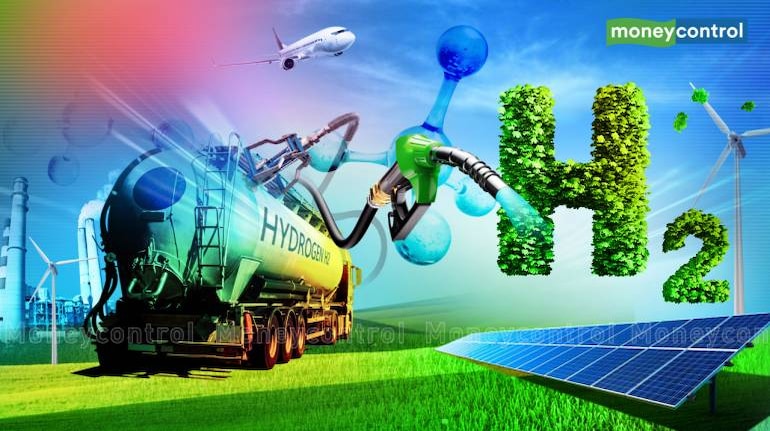



The Sikkim government’s effort to create a green hydrogen hub in the state is seeing interest from an unlikely organisation — The Korea Research Institute for Human Settlements (KRIHS). The reason: as soon as there is a breakthrough and green hydrogen can be generated for fuel or commercial uses, the biggest beneficiaries would be towns and cities which have to work under zero carbon norms. Power generation, transport, city management and running high-speed metro trains on this hydrogen would earn them green tags.
Today green finance is chasing large and innovative projects. The Sikkim Ministry of Industry has signed a memorandum of understanding (MoU) with the Construction Industry Development Council (CIDC), an autonomous body of the Planning Commission to work with the sector. This project will help Sikkim tap hydel energy to create a green hydrogen hub that would make it self-sufficient in energy and manage its green goals.
Employment Potential
With an estimated statewide population of just 6.7 lakh, this project has the potential to generate about 25,000-30,000 jobs, which would account for a large part of the employable urban youth. The jobs that are currently on the skills training agenda include production, maintenance, handling the fuel and setting up the plants among others. The jobs would range from skilled to semi-skilled and unskilled. The tech provider would be the KRIHS, which would also impart skills training in India as well as in South Korea.
Sikkim is the second state, after Rajasthan, to work with CIDC and the Korean partner on producing green hydrogen. In Rajasthan, the energy source is solar instead of hydel in Sikkim. Gujarat and Chhattisgarh too are in talks with CIDC to establish hubs in their states. A huge township is proposed to be established as part of this project in Rajasthan, which will be wholly worked on green fuel. Currently, the prototype of involving the various state government arms in the venture is underway.
Two things here are noteworthy. State after state is readying itself for the green hydrogen boom that will not only provide energy but offer green tags that can secure various incentives, fiscal and otherwise, as the country progresses towards its global 2030 commitments. The construction and building sector is the largest contributor to carbon emissions in the world. So, any solution that has the potential to reduce these emissions would have the construction sector on board.
Green Townships
It is also a rich industry globally. Spending money on promising ventures that provide carbon credits would be attractive to this sector globally. Unlike South Korea, which is a small country, these solutions will have greater meaning and returns in a populous and growing India. These early experiments with green hydrogen processing and its usage in the urban context would be relevant to the numerous towns and cities that would soon emerge in India as urbanisation jumps from 35 percent to 50 percent in a few years. Working prototypes of low-energy green townships would then be easily replicated in these contexts.
Finance is available because the projects are green and technology is easily accessible from the foreign lenders as well. What does India need to do to take advantage of this situation? As PR Swarup, director general of CIDC puts it, “Various arms of the state government have to work closely towards the same results for this project to be successful.” This includes drafting the regulatory framework, training the technical staff, and getting the administrative cadres aligned to these principles of setting up and administering the new regimes. The finance teams have to be on-boarded for the investment to be channelled efficiently.
A group of officers from Rajasthan is already preparing to leave for South Korea for one-on-one meetings with potential investors. This will be supplemented by a conclave in New Delhi in September.
Critical Inputs
There are three critical inputs for this technology to succeed — solar or hydel energy to produce green hydrogen, plenty of water and enough trained manpower to work this system. Rajasthan has solar power and plenty of land to be allocated but water is still an issue. Sikkim has water and hydel power but fewer trained staff and land. Currently, while the technology to produce green hydrogen that can be transported is still under study, existing producers are trying to replace the blue or grey hydrogen used in industrial plants with the green hydrogen manufactured in the vicinity.
When green hydrogen cells technology is perfected, it will simply be a matter of time before carbon-spewing cities can quickly switch to green functioning. This explains the early experiments by states and global investors. The September conclave is expected to host over 150 companies from South Korea, including real estate and automobile giants, who come as investors in this technology. From India, major users of hydrogen, including the oil and natural gas companies are expected to be the first beneficiaries of the green hydrogen produced during the research phase. Cities are readying themselves for the green bounties of the future.
E Jayashree Kurup is a writer-researcher in real estate and Director Real Estate & Cities, Wordmeister Editorial Services. Views are personal, and do not represent the stand of this publication.
Discover the latest Business News, Sensex, and Nifty updates. Obtain Personal Finance insights, tax queries, and expert opinions on Moneycontrol or download the Moneycontrol App to stay updated!
Find the best of Al News in one place, specially curated for you every weekend.
Stay on top of the latest tech trends and biggest startup news.